Veeraswamy Krishnaraj June 13, 2020
Life in the village in the early 1900s.
The well-to-do villagers with brick houses, humongous backyards, large tracts of lands, a plethora of servants, cows, bullock, or horse-drawn carts employed a multitude of people who delivered all the necessities of village life at the doorstep. The grocer home-delivered exotic vegetables. Commonplace vegetables, grown in the backyard such as brinjals (eggplants), greens, beans, gourds, pumpkins, mangos, papayas and much more were the fresh vegetables and fruits for the almost a 24-hour active smoking kitchen, managed by Samayalkārans and or Samayalkāris (the men and women cooks). The men did all the cooking, and women did all the cutting, grinding, and disposing of the waste. The cows ate the leftovers from the kitchen. The rest went into the compost heap. The cooks usually belong to the same or equal castes. The kitchen and the prayer room are sacrosanct. There are restrictions and privileges as to who entered and who stayed out. The cowherds and menial workers never entered the house but worked in the backyard tending the animals. The woman of the house cooked porridge (கூழ்) to feed the cowherds.
Samayalkāran
and or Samayalkāri =
சமயல்காரன்
This village in the spotlight was close to the town. You may say it was an extension of the city. Our man in the limelight was the headman. The villagers looked up to him for his generosity. The constant smoking kitchen was proof of the daily visitors eating their meals in his home.
Hospitality was the headsman's forte. It came naturally to him, and he could afford the lavish offering of food to the visitors. In his religion, appeasing one's hunger was service to God.
No villager, boy, girl, woman, or man suffered from want of food. He paid for the children's education. He provided books, pencils, and the rest. Now you know why the kitchen was smoking 24 hours a day.
Who is this man? He came from a long line of landowners, who possessed lands in several villages in the area. His name was Ponniyar. He went by one name only. Because of the high station in the village life, he was the assigned tax collector for his and other villages. He had people to do the collection for him to hand over the taxes to the Britishers, the ruling class.
On a nearby street in a modest thatched house lived the village barber. He went from house to house and sheared, clipped and cropped the beards and the hair of men and children. His name was Nāvithan. The ingrained caste system was in place. Everyone knew his place, but amity was the password among all the people.
Nāvithan had the shearing responsibility for the village higher caste people, living in the brick houses. He visited them in the lobby. He cut, shaved, and snipped, sharing the latest news of the town and its people. Then there were no newspapers in the villages. He made sure he kept the family secrets to himself. Tonsuring an adult had its share of peculiarities. On second thought, they promoted hygiene. The rich had their razors and would not allow the community razor to shave them. He had his own, an import from England. A few of them were in storage. Typically, the barber sheared the beard, clipped the hair on the head, and the nails, shaved both hands from the back of proximal digits to just above the wrists. I wondered why he needed his fingers and wrists shaved. It is possible they the hairy men did not want to see the hand hair fall into the food, eaten with the fingers. Later with another razor, the barber proceeded to shave the escutcheon (the shield-like pattern of distribution of the pubic hair). The man must have some trust in his barber! The first time I witnessed it, I was shocked, and later, I got used to it. To think about it, it is very hygienic. Think of a pubic louse taking a stroll in the hairy forest of the pubis, laying eggs (nits) on the hair shafts, and making more baby crabs. Having pubic lice must be an itching hell. Later I found out that the crab infestation (Pthirus pubis) is present wherever there is overcrowded living: Student dormitories. Those were the days when people did not have medications to apply for the pubic louse. The best treatment was to shave the escutcheon.
Nāvithan worked for the highest caste people on Mondays and went down the rung of the caste ladder shearing the lesser castes on the following days of the week. Only the higher castes had their own British-made razors (sometimes Germany-made). Others used Nāvithan's community razor after a cursory antiseptic treatment.
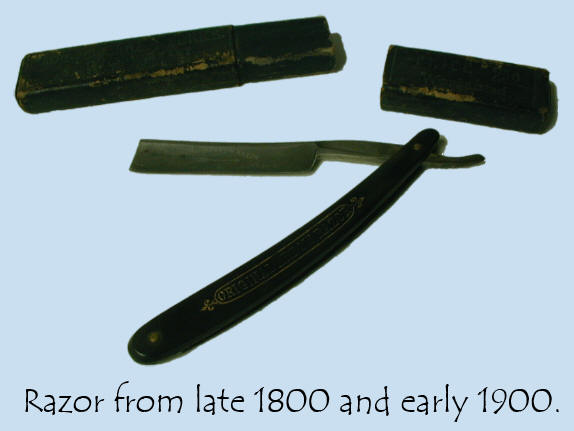
A good number of children and adults took periodic tonsuring of the head.
He found the ritual first cutting of the hair of the head of the infant was a difficult chore. He carried distracting toy clowns to make his job more manageable. Occasionally, there happened some nicks and cuts. He used a styptic to soothe them.
One day, he found a raised black and red mole on the head of one of the village's leading citizens. The client had not shaved his head for a long time. Being intelligent and having not seen a mole of variegated color, he thought it must be something out of the ordinary and sent the client to a doctor in the town. The diagnosis by excision biopsy was skin cancer, and the client had a total resection of the lesion. The barber saved the man.
No wonder, the surgeons of the British Isles started as barbers, who wielded the knife, like no one else.
Nāvithan had diagnosed many skin diseases and carried creams, lotions, potions, ointments for every imaginable skin conditions. His ancillary medical business was thriving well. In his village and the town, he was the primary skin doctor. He applied a glued cotton fabric with embedded burnt leaf ashes and other ingredients (trade secret) to cuts and gashes after approximating the edges. They healed with minimal scar.
He had one son and one daughter: the former wanted to be a doctor and the latter an engineer. The son's inspiration came from seeing his father patch up the wounds.
For entertainment, the village elders organized stage and street performances from Ramayana and Mahabharata periodically. Pongal and Deepavali were grand celebrations. Pongal is the harvest festival. Because Nāvithan was the village barber, he knew them personally, at least the men of the households. The privilege of organizing the festivals went to the barber.
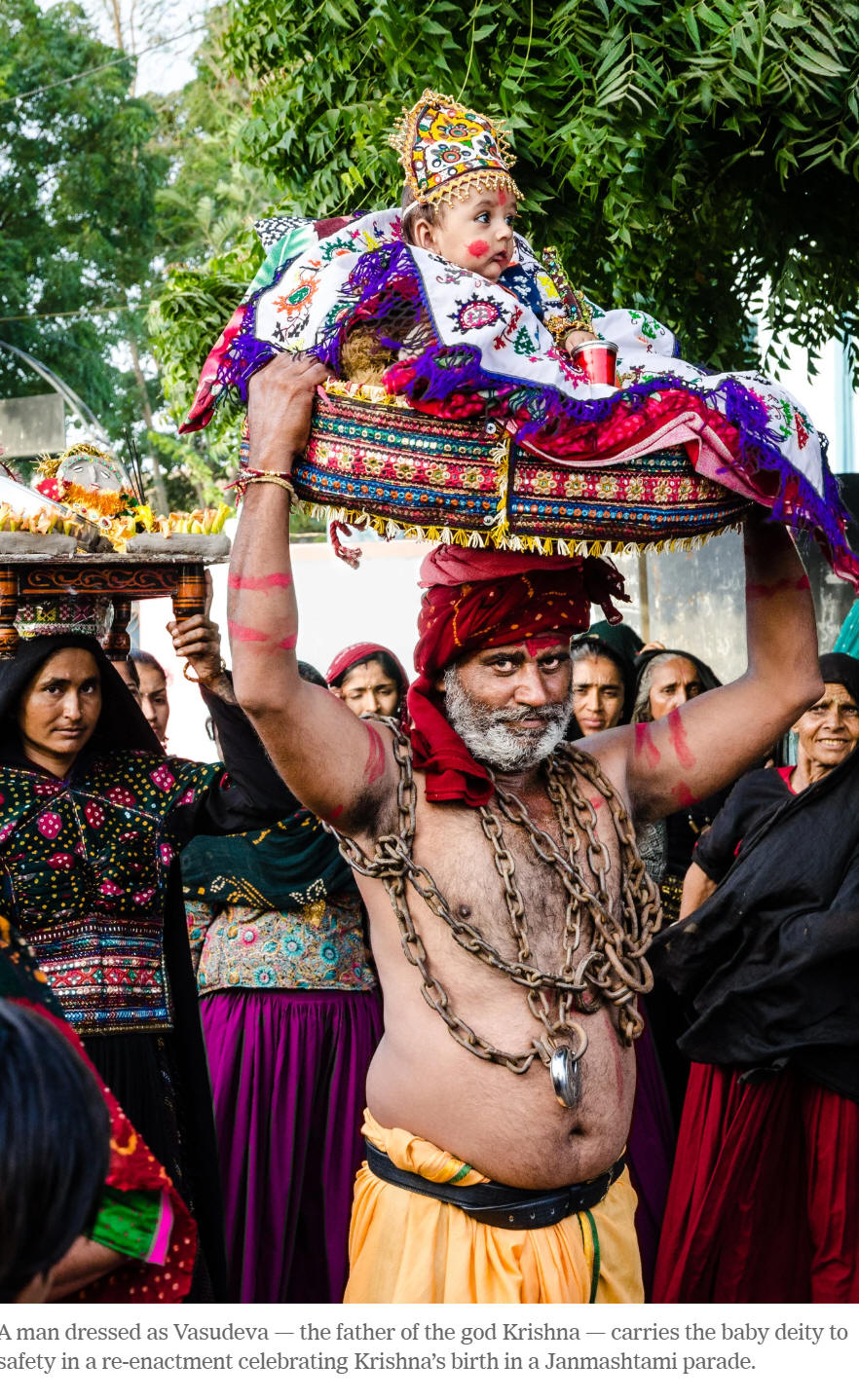
A scene from the Life Of Krishna, born in a prison cell,and taken away by his father Vasudeva stealthily across Yamuna River to safety Credit NYT
The Brahmins and the high caste people played the leading roles: Rishis, and the kings.
The boys and men played the roles of girls, women and men. All others played their respective roles. The animals like cows, dogs and cats served as props in the religious drama. The shows lasted for a week.
Pongal was a three-day festival: Bhogi Pongal, Surya Pongal, and Māttu Pongal in mid-January, indicating the end of the winter solstice and the beginning of the northern passage of the sun called Uttarāyanam. Pongal is cooked rice, jaggery, and milk preparation. The effervescent bubbly boil-over is Pongal. The Pongal servings went to the deities first and later the cow and then the whole family. The cow is an important animal in the village life. Its body is the abode of umpteen gods and godesses. Naturally the cow is holy from muzzle to tail.
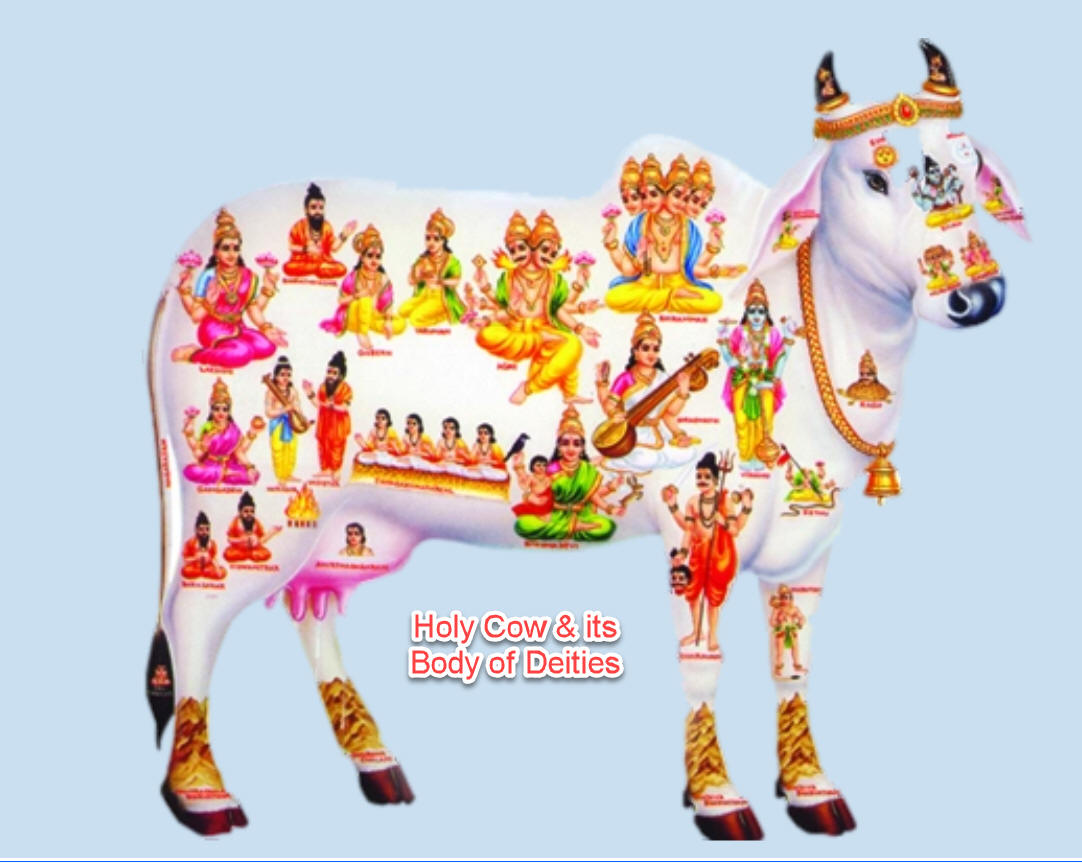
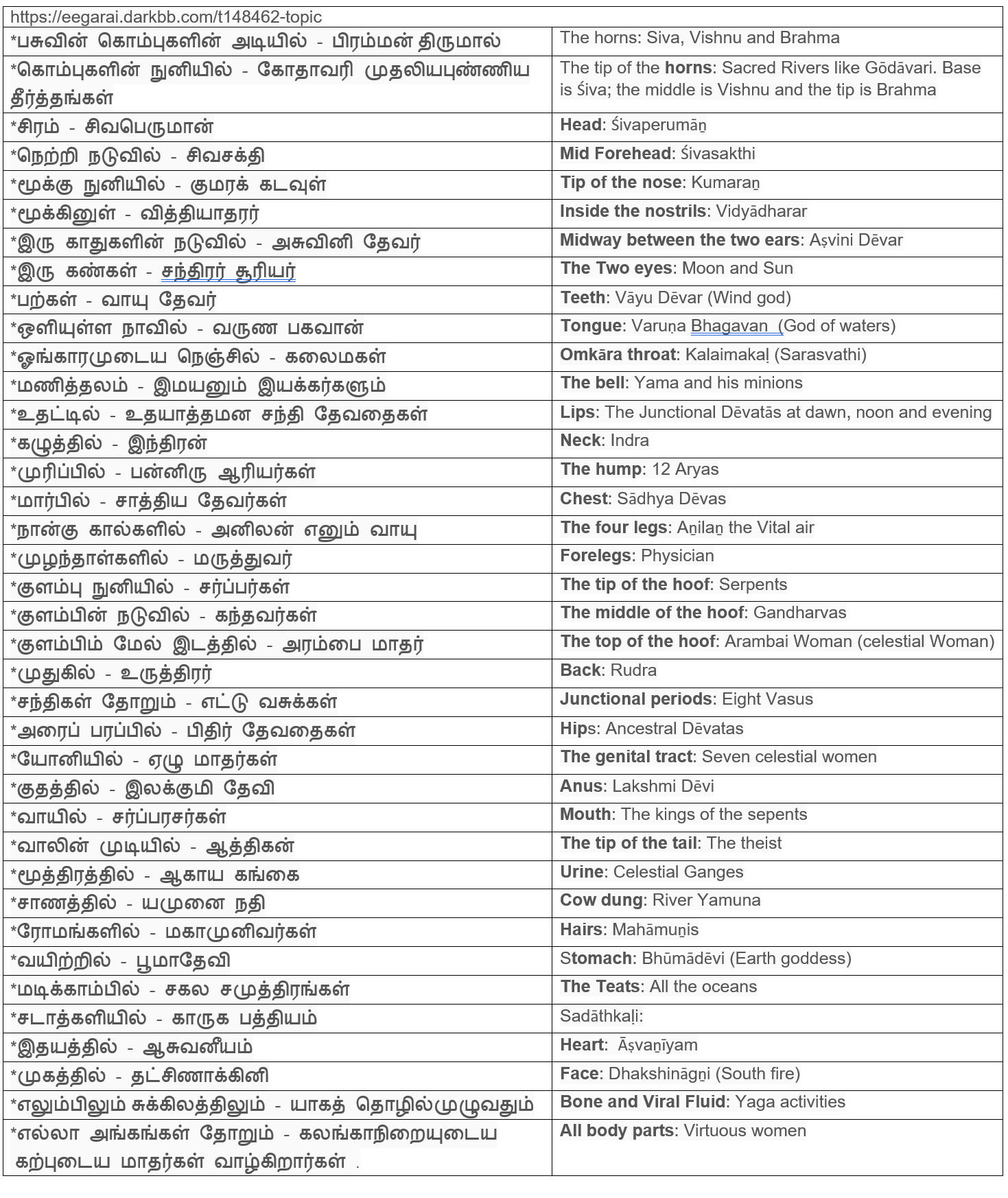

Bhogi Pongal marks the end of Mārgazhi month (Mid-Dec to Mid-Jan). The celebration entails a bonfire of old clothes and household rejects. Whitewash and paints go on the house, besides the Kolams in the front yard.
Flowers and mango leaves decorate the house. Children enjoy wearing new clothes. Indra is the centerpiece of the day because he sends rains for the crops.
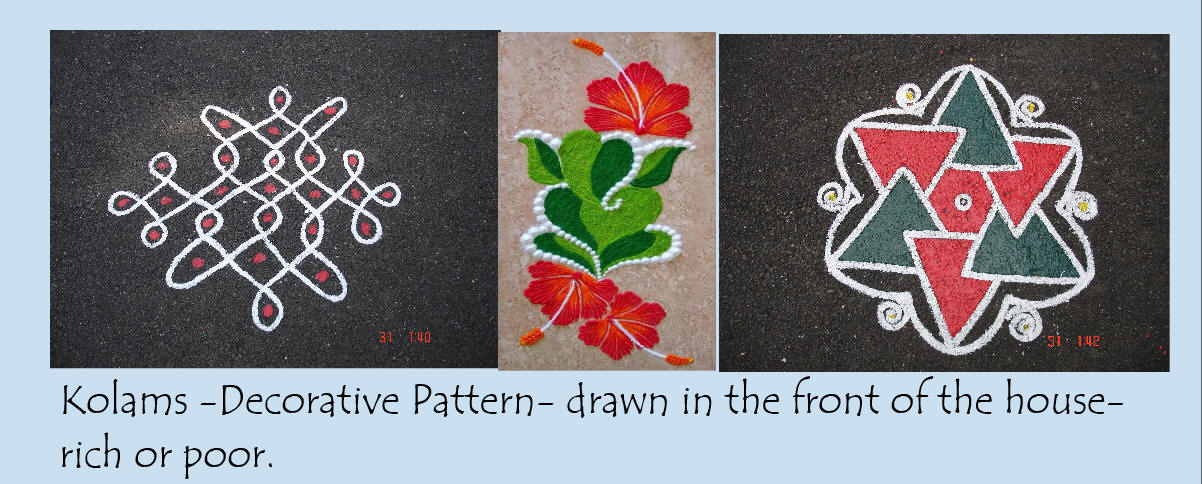
The headman of the village (Ponniyar) helped his children graduate and enroll in the colleges.
As Navanithan was reaching his 70th birthday, his hands were not as steady as before. Fortunately, he did not cut anyone by mishap. He had resting and action tremors. His wife dissuaded him from shaving the men of the village. The children concurred. The city doctor said it was Parkinson's disease and put him on medications. His condition improved, but the hand tremors persisted. He was the man who was an expert in wielding his razors with precision. Now the fate decided to take away the best he could offer to his villagers. Nothing was lost. His children joined professions other than the hereditary one.
He was happy because his children made something out of themselves. His son became a doctor and his daughter, an engineer.